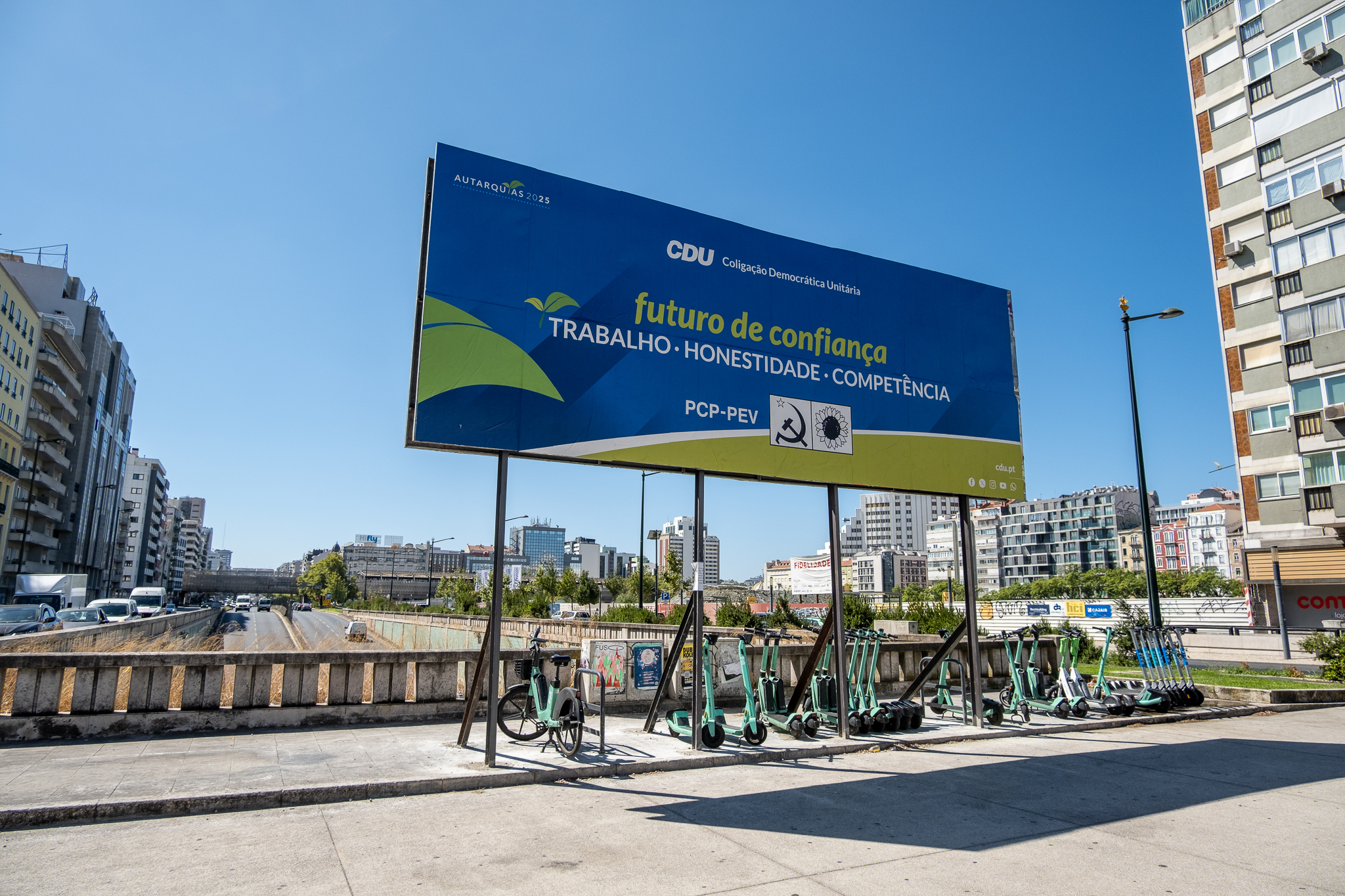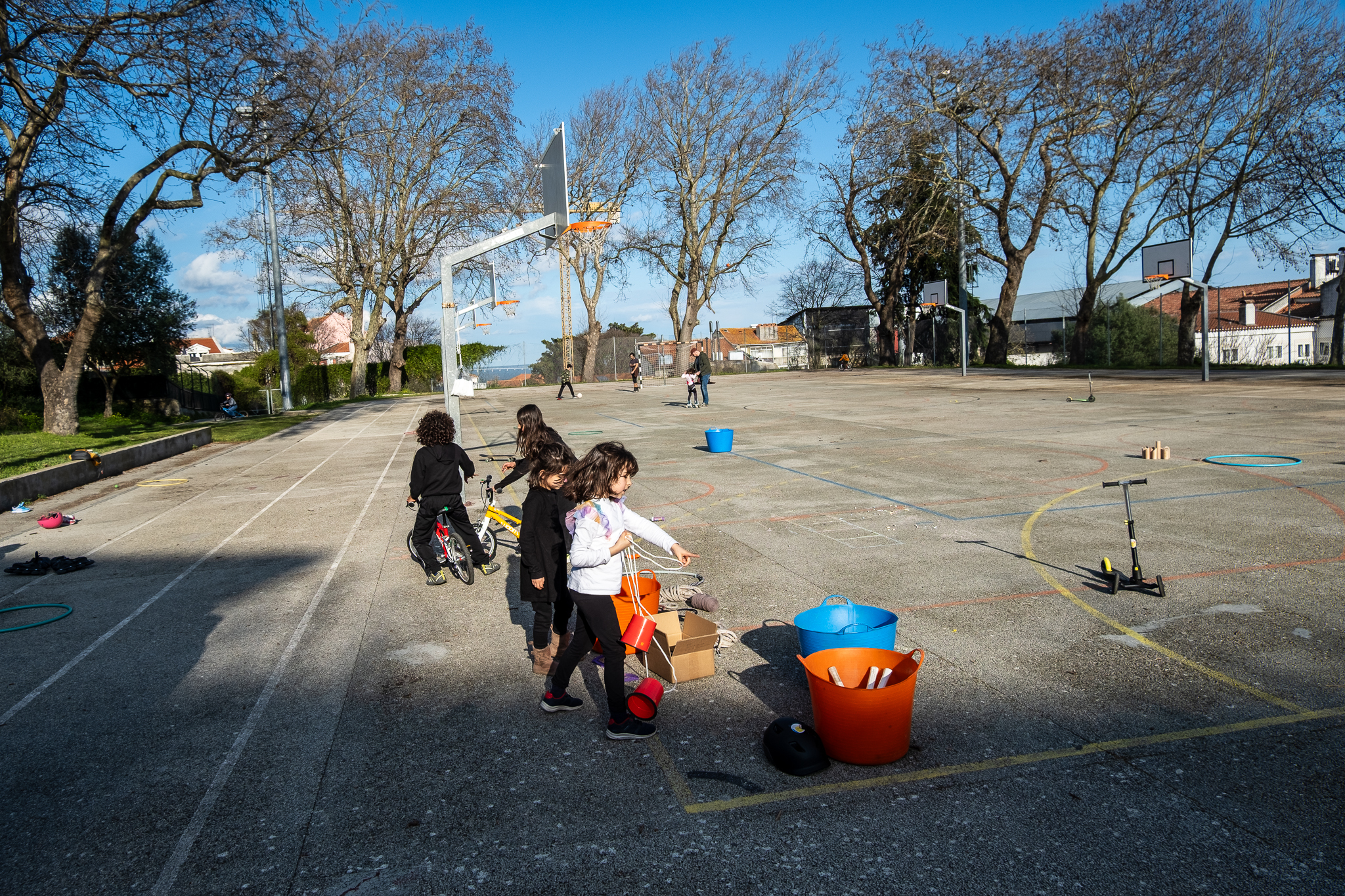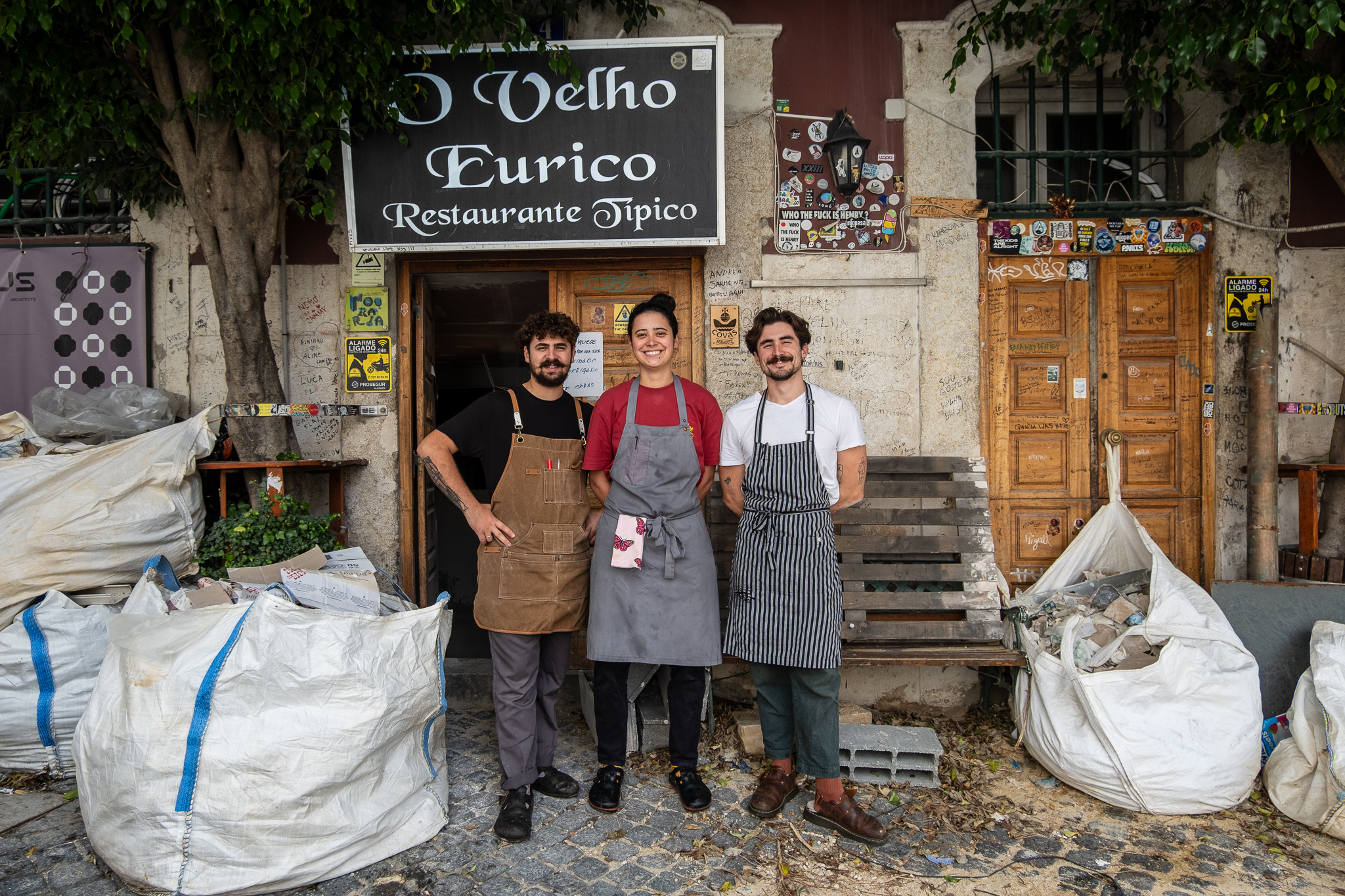Despite being a small neighborhood artery, the Rua do Sol ao Rato was widely used by drivers to reach the A5. With the work of reversing directions now underway, it will lose this crossing traffic. But is this a missed opportunity to give this street a more pedestrian design?

Since the beginning of the year, Rua do Sol ao Rato has been under construction. We tried to understand what is recommended for that narrow street, which has long been used as a shortcut for many drivers to reach the A5 highway, escaping the traffic lights on Rua Dom João V - which, being a main and distributing road, should be used for that purpose. What improvements can be foreseen in the project made available in the site of the Junta de Freguesia de Campo de Ourique and what other improvements may have fallen by the wayside?
Rita Castel'Branco is an architect, worked for the Lisbon Chamber for several years and is a frequent user of that axis, which he has long argued should be of coexistence. When she saw it going into construction, she hoped for the best, but soon began to see the kerbs resurfacing, becoming apprehensive. “They're going to reverse the directions of the street, and rightly so, to take away the through traffic. The improvement is substantial, but an opportunity has been missed to change the character of the street from something car-centric to a people-centric design."he explains.
That street is an important pedestrian connection, as it directly connects the neighborhood of Campo de Ourique to the Rato subway station, to the other public transportation that passes through there and to important areas of the city. "That's why it has so many pedestrians, despite the narrow, uncomfortable sidewalks and heavy road traffic. The current demand leaves one guessing a huge pedestrian potential, if other conditions are given to people." By reversing directions, a substantial amount of the traffic will evaporate and it is natural that more pedestrians will feel invited to use the street, as Rita points out. "It's going to become one of those streets that has a car on it once in a while. And yet, we've again created a space that allocates more space to the few cars that will be driving there, than to the many people who walk it."


"On one-way streets like this one, substantial improvements can be achieved by simply reversing direction along the entire street or a section of it. This eliminates the vast majority of traffic, calms the speed of those driving, and enhances coexistence."he explains. "I have long advocated the elimination of cross traffic on Lisbon streets that have profiles that are too narrow for the road functions they are fulfilling and therefore do not offer the most basic conditions for a person to walk - not even for those who enjoy full mobility." The architect, passionate about a more human vision of the city, has no doubts: "As much as we have become so accustomed to half-meter sidewalks that we don't question them, most people will agree that these are not acceptable, jeopardizing the safety of some and the freedom of others, inhibiting people from walking and compromising access to public transportation."

This street will only be intervened, for now, in the block next to Largo do Rato, from which drivers will no longer be able to access the street and will be forced to turn around by Dom João V to access the neighborhood of Campo de Ourique. From the Street D. Dinis, which ends in Rua do Sol ao Rato, it will be possible to go down to the Largo do Rato or up towards the neighborhood, more specifically to the streets Silva Carvalho and Campo de Ourique. "Rua do Sol ao Rato will be left with local traffic only, safeguarding the health and quiet of the residents"Rita perspective. Even so, the President of the Junta mentions that the reduction of traffic, with the cut already made because of the work, did not reach the intended levels."In construction, we're not getting a reduction in traffic as we would like. I thought we were going to have a big reduction and it's still not there."
The sidewalks from Rua do Sol to Rato have always been narrow. Although this is a one-way street, the space that could ensure a better sidewalk serves for car parking - something that in the parish of Campo de Ourique, particularly in that area, is a scarce asset, as pointed out by President of the Parish Council, Pedro Costa. "Unlike in the rest of the Campo de Ourique neighborhood, here in Santa Isabel there are zero possible solutions for large parking, either surface or siloed. There is no land for that.", points out. "We really have a parking shortage problem." In the streets that intersect with the one from Sol ao Rato, the availability of parking spaces is already scarce; and the President of the Junta de Campo de Ourique admits that it is not possible to improve pedestrian mobility in the streets of Páscoa and Arrábida and provide them with full accessibility without affecting parking.
In 2019, EMEL opened a 245-space car parking lot in Rua Correia Teles, in Prazeres, which cost 2.21 million euros (about nine thousand euros per space) and was built on land that was once vacant. This year, another park is in public tender, in silo, with 89 places and an estimated cost of 2.56 million euros (about 28.8 thousand euros per place), in Rua Padre Francisco, also in Prazeres and also in a vacant lot, just over a kilometer from Rua do Sol ao Rato and the entire area of Santa Isabel where it is inserted. For Pedro Costa, these investments are important to free up public space in the streets. The President of the Junta says that he cannot do without, at least for now, the Sol ao Rato places.

For the architect, what is in question is not the local access or the seven parking spaces that the council plans to keep in that section. But only the character of the street that, to be of coexistence, should be all level and have a sidewalk that gives a clear indication of pedestrian priority, instead of asphalt. Instead, the intervened section will keep the street divided between road and sidewalk, although it is planned that the pedestrian area, with sidewalk sidewalk, will be almost at the same height as the road, whose sidewalk will be asphalt. "The street could have had a new design that gave the space a more pedestrian reading, more appealing to the pedestrian"Rita said, sustaining herself in the high pedestrian traffic that exists there due to all the public transportation existing in Rato.
Even with a street profile in which the pedestrian space is differentiated from the road, rather than a design in which the different modes are conflated, the pedestrian area will increase with the creation of a new "intensive use area"In other words, an area that during the day is used as a sidewalk and at night as a parking lot. Pedro Costa, who defends these multi-functional uses of the same spaces, says "enforcement today has already stopped abusive parking in the intensive use zones" that have been created in other streets in the parish, although he admits problems in the beginning and that the lack of enforcement is a general problem in Lisbon.



In the block from Rua do Sol to Rato, the "intensive use area" will provide a sidewalk of about two metersThe road will be three meters wide, with a continuous sidewalk at the intersection with Rua D. Dinis and Avenida Álvares Cabral. The road will be three meters wide, the intersections with Rua D. Dinis and Avenida Álvares Cabral will have a continuous sidewalk (an urban design that has been increasingly used in Lisbon and that gives greater priority to pedestrians), a small tree will be planted and guides for the blind will be placed in all pedestrian crossings.
According to the preliminary study already carried out for a future intervention of the entire street, no more substantial changes are planned, apart from general improvements to the sidewalks and accessibility, and renovation of the sidewalks. The final execution project may be different - as, in fact, was this block in relation to the previous study - but, for Pedro Costa, it is certain that "the total reprofiling of the Rua do Sol ao Rato will respond to the problems of other streets". of Santa Isabel, the ideal future goal being to create an urban coherence at the level of the entire neighborhood and of that area.


The President of the Junta de Campo de Ourique understands that the work on Rua do Sol ao Rato, like others already done, "it is an intermediate and transitional work" that leaves the street ready for other possible designs in the futureSuch as creating a coexistence zone or even a mostly pedestrian space on the part of the street that is now under construction (the limitation would only be to provide access to a garage that now exists). "We are not at a stage where you can do that pedestrianization"Pedro Costa believes that the arrival of the Metro at Campo de Ourique in 2026 will change the current movement of pedestrians in that street, because there will be a station closer to the neighborhood.
While we were photographing and discussing the Rua do Sol Ao Rato, a resident interrupts us. "They're not going to take away our parking lot, are they?"she asks us fearfully, seeing that section of the street cut off and turned upside down. Maria, 67, lives on Rua do Sol ao Rato and says "it is very difficult to park your car here". We tell her no, that parking will be maintained, but only during the night. Maria's concern then turns to other components of the street. "I hope they improve the sidewalks which were horrible sidewalks. I once saw a lady fall there because the floor was slippery."he said, saying that he would have preferred them to lay comfortable sidewalk in Portuguese paving. "They should keep the Portuguese sidewalk only in the historic sites." We ask her if she wouldn't prefer a pedestrian plaza with more room to stay and socialize there on her street; Maria replies without hesitation that she doesn't see the point of it and that she was afraid it might bring noise and disturb the rest. "The biggest stupid thing they can do is spend money to put benches in the street. I have a step there at my door. If people want to, they can sit there."he jokes.
Rua do Sol ao Rato is one of the new arteries in Rato, a square where priority is evidently given to cars. "I've lived here for 43 years and I've come to terms with always taking so long to cross Largo do Rato"says Maria. Rita Castel'Branco has already made a proposal to redesign that entire square, which has also had a proposal under the municipal program A Square in Every Neighborhood - which was never intervened. "You have to look at this and figure out what we can take away in terms of movements and traffic volumes, and what we can put in."says. "It was important to solve the square at the level of the cycling network, for example." With three or four different land levels, the Largo do Rato is the meeting point of four main roads - the Rua D. Dinis I, which goes to Amoreiras, the Rua Alexandre Herculano, which connects to Marquês de Pombal and Avenida da Liberdade, and Avenida Álvaro Cabral, which goes to Estrela.

Here we also cross Rua da Escola Politécnica, which with the traffic cut foreseen in Rua de São Pedro de Alcântara should lose much of the traffic it has today, Rua de São Bento, which could also lose much of its current traffic weight, and also some secondary streets, such as the already mentioned Rua do Sol ao Rato. "There are movements that are missed and there are others that maybe, if inhibited, could drive cars out of the Largo." For Rita, it is necessary to look at the road, pedestrian, cycling and public transport networks as a whole and in an integrated way, but the work on Rua do Sol ao Rato to break the possibility of crossing will be important for the Largo's dynamics. Basically, it can happen to this street what happened to Rua do Salitre, which also intersects in Rato, many years ago, when a group of residents, desperate with the intense traffic that circulated there, proposed to pay an intervention that would calm it down. The issue was solved, at no cost, with the change of half a dozen traffic signs and without any dispute: the residents gained peace of mind; pedestrians gained safety; and drivers who used the street as a shortcut will have realized the fairness of the change. "Today it is a street with very little traffic and it is still broken in the middle, preventing through traffic"says Rita.

Back to Rua do Sol ao Rato. The work on the block next to Largo do Rato is being carried out by the Junta de Campo de Ourique and financed by the Lisbon City Council, costing about 55.8 thousand euros. The work began in early 2023 and should be completed in April. In relation to an intervention in the entire street, there is no schedule for now.











